 Be Inspired Blog - Arizona
Be Inspired Blog - Arizona
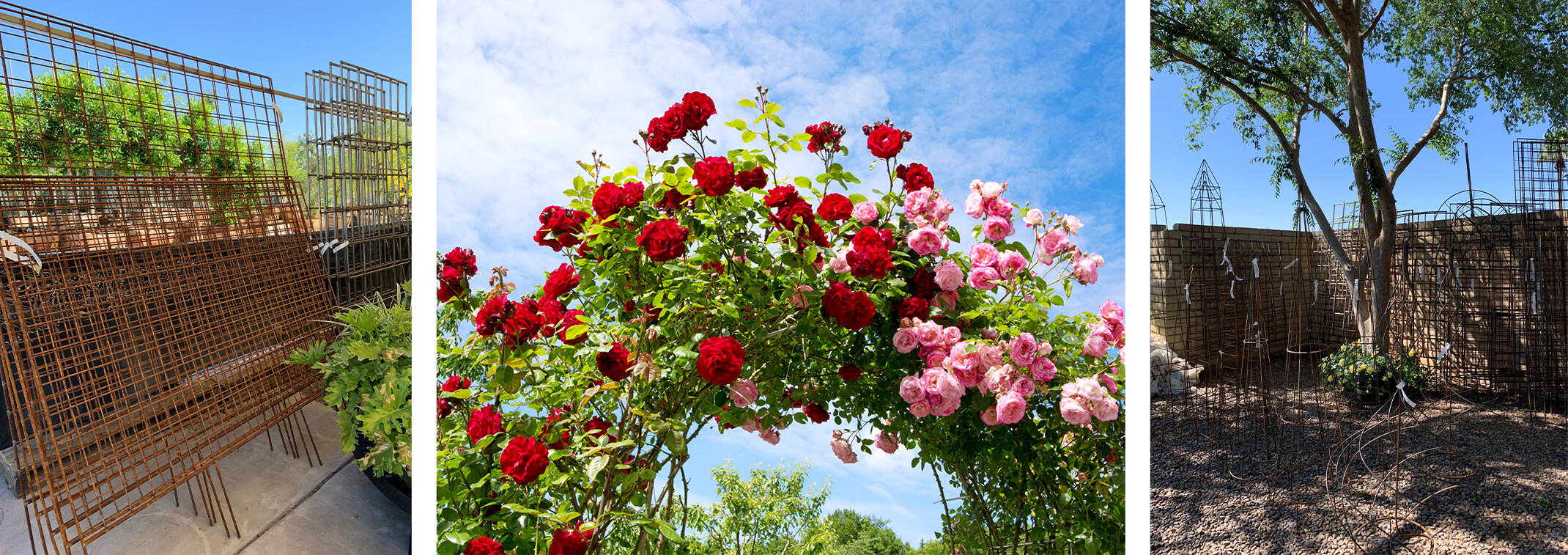
How to Use Trellises and Support Structures in Your Garden Design
Trellises and other garden structures are helpful for providing support to plants that need help staying off the ground, but if you use them strategically, they can really compliment your overall design. Some plants grow beautifully with a trellis, while others are more suited to structures like stakes or cages. Some structures have major visual appeal and a distinct look, so it’s really a matter of your design preferences and tastes. Here’s a breakdown of how to use trellises and structures in the garden to support climbing vines, top-heavy flowers, and other plants that need help staying upright.
Using Trellises and Garden Structures to Support Climbing Plants and More
Once you’ve figured out how to utilize trellises and supports best, you can get really creative with the ways you use them in your garden design! Here’s a breakdown of the style and functionality of each garden structure, so you know when and where to install them.
Trellises
A trellis is a garden structure typically used to support climbing plants like Jasmine, Bougainvillea, and other creeping vines. They often have a lattice weave pattern, but some have rungs like a ladder; in fact, you can use an actual ladder as a trellis if you like! You can use trellises for plants in garden beds or containers. Position your trellis right behind the base of your plants so that as they grow, they can cling to the structure above and continue climbing upward.
Some plants are naturally good at climbing, but some may need a bit of help. If your plants aren’t wrapping around your trellis in the way you’d like, you can gently position the vines and train your plant to grow in the direction you’d prefer (with the help of plant ties if needed).
Trellises and moss-covered poles are even available for indoor plants.
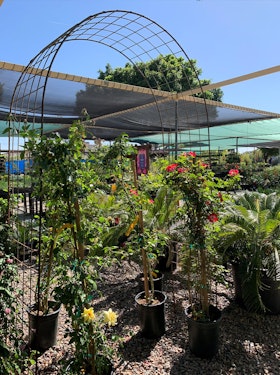 Arbors
Arbors
Arbors have similar features to a trellis—often with a lattice or ladder rung design—except they are arched instead of a flat panel. They make absolutely beautiful entryways for the garden along paths. There’s something distinctly romantic about them—it’s no wonder they’re often the backdrop for wedding ceremonies! Cover them with climbing roses or creeping vines to create a dreamy display in your landscape.
Obelisks
Obelisks are like a 3D trellis with three or four sides, tapering at the top to create a tall, skinny pyramid shape. They’re useful for creeping vines as well as vining vegetable plants like cucumbers, eggplants, and zucchinis. Dark-tinted or oxidized metal obelisks are particularly striking—they’re an attractive and dramatic accent piece for the landscape.
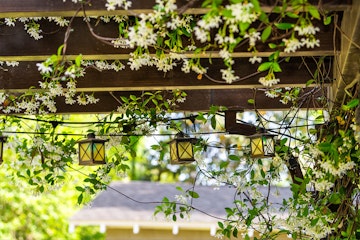 Pergolas
Pergolas
A pergola is like a semi-covered roof for the patio. Instead of completely shading the area, wood panels run across the top, allowing some sunlight to come in. When you train vines to grow up and around your pergola, the space fills in a bit more with greenery, but that sunlight still twinkles through, and you can see the stars at night. Pergolas look stunning with twinkle lights—perfect for late-night entertaining outside!
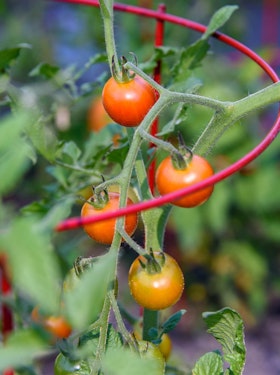 Tomato Cages
Tomato Cages
Tomato cages are like several stakes held together with several rings that act like levels. They are suited to indeterminate tomatoes, zucchinis, cucumbers, and other vining vegetables. While your plant is still small, insert the tomato cage into the soil so as your plant grows, its branches are supported, and the structure keeps it centered and upright.
Stakes
Garden stakes are pretty simple. They aren’t as aesthetically unique as other garden structures, but they can help tidy up the design of your landscape. Essentially, they’re just tall, skinny sticks that you press into the soil near your plants. Gently tie the stem of your plant to the stake with some florist’s wire or plant ties—not too tight, because your plants are going to keep growing! Stakes are popular for tall vegetable plants like indeterminate tomatoes and top-heavy flowers like Fox Gloves, Holly Hocks, Delphiniums and Sunflowers that can flop over and need help staying upright.
Fences
Yes, your fence can be a garden structure too! If you’ve got a plain chain link fence, you can completely transform its appearance by planting creeping vines all along it. Wood fences work as well, but you may need to train your plants to wrap around the panels manually.
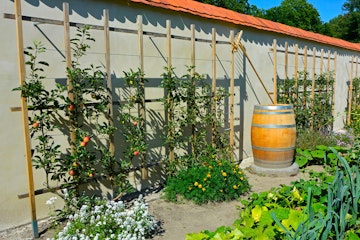 Espalier Trees
Espalier Trees
If you're short on space, you might choose to grow fruit trees or ornamental shrubs as an espalier. Espaliers are trained to grow on a flat structure or against a wall. They can be trained using flat square or rectangular wooden or metal structures, or with wires attached to walls or posts.
Plant Anchor Kits
Want to attach a vine or shrub to an existing surface? We've got Plant Anchor Kits that adhere to masonry, wood, stucco, glass, plastic, steel, concrete and more!
On the search for garden supports and trellises for sale in Arizona? Visit your local SummerWinds Nursery to see all the beautiful options we carry to help your plants grow taller and stronger and improve your garden design’s layout and overall appeal.

